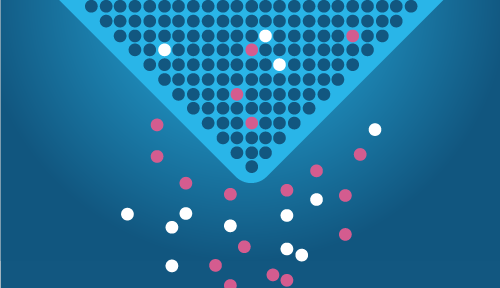Can you imagine trying to solve different challenges in the same way constantly? You can use the same method only so many times before it stops working in the face of a new challenge or unpredictable circumstance.
That’s why agencies can’t afford to problem-solve like a broken record. Public servants need fresh perspectives and creative ideas even beyond agency lines to make persistent progress on their most urgent problems.
This is what The Opportunity Project (TOP) at the Census Open Innovation Labs (COIL) does. With TOP, agencies can look beyond traditional strategies, such as procurement and policy interventions, to find answers they may not have found on their own. Through the use of open data, the program:
- Offers a lightweight method to tap into expertise outside government to tackle national challenges through 12-week sprints.
- Works with communities to create solutions guided by real needs.
- Creates a direct line of communication between data users and stewards, giving agencies the opportunity to receive feedback on their data.
- Establishes community collaboration as a standard for future work.
“We see The Opportunity Project as a new way of problem-solving,” said Anna Valuev, Deputy Director of TOP.
TOP’s work in standardizing addresses in Puerto Rico is one example. A lack of standardized, locatable addresses on the archipelago means that government services may not reach residents, especially during emergencies and natural disasters. After an initial sprint in 2018, a sprint in 2022 will continue to build on efforts to identify addressing gaps and create an accessible database of addresses for people and businesses in all parts of Puerto Rico.
Drive Solutions Through Partnerships
The addressing project is one that reflects years of productive collaboration across agencies, industry and local communities, said Haley Ashcom Miller, Enterprise Innovation Adviser at COIL. And this multiyear collaborative partnership is what’s key to creating impactful results.
Although TOP is usually a 100% virtual process, federal staff and industry partners went to San Juan, Puerto Rico’s capital, in 2018 to meet with community members and see challenges firsthand.
“This was able to make a huge impact on the sprint and really created those long-term relationships between federal staff, the community members and the companies that were involved,” Miller said.
Many of the individuals who got involved stayed involved through the Puerto Rico Address Data Working Group, which led to the 2022 sprint.
The addressing problem may not be fully solved yet, but the groundwork of less transactional, more evergreen partnerships has motivated public servants and partners to persist in tackling the challenge.
Think Beyond Project Timelines
To build long-term partnerships, think of yourself as a bridge between people instead of projects.
This helps you consider opportunities beyond initial programs to create a system of iterative problem-solving.
“It’s not just seeing our work based on those 12- to 14-week sprints, but really as an evergreen program, and continually seeking opportunities to build bridges between government and the folks in technology companies, academic roles and community groups,” Valuev said.
Be Human-Centered
During sprints, it’s critical to be human-centered. Human-centered design is an approach that starts and ends the solution-making process with the people you’re creating solutions for, according to the design studio IDEO.org.
Whether virtual or in person, make sure you’re creating a participatory process with meaningful dialogue that values local expertise. That’s what will drive the best feedback toward solutions, whether they’re technology-based or not.
For instance, some of the potential solutions for the 2022 addressing sprint may not be technological, Miller said.
“Take that moment to identify what the best possible outcome is, even if it’s evolving over time,” Miller added.
In other words, partnership is key. “Continuing to make our data-sharing collaborative so that we’re able to get input from our end users — from those whom our data is about, and from those who are impacted by various types of national problems — is always going to create the most impact,” Miller said.
This article is an excerpt from GovLoop’s guide “Your Data Literacy Guide to Everyday Collaboration.”





Leave a Reply
You must be logged in to post a comment.